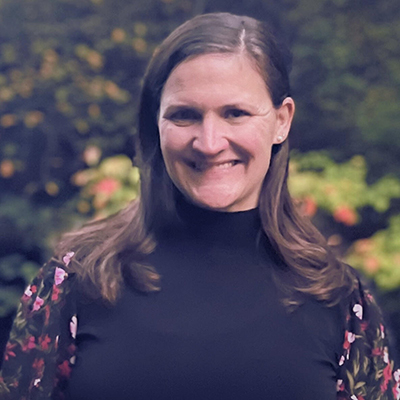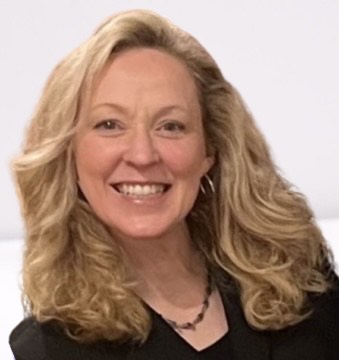 Many of us often think of ourselves as creatures of habit. We all have our comfort zones and grow to rely on routines to keep us grounded. It’s natural to shy away from challenges at first, but also rewarding to step outside of our comfort zone and grow through new experiences. Jennifer Keller, an elementary teacher at the Jordan/Jackson Elementary School in Mansfield, Massachusetts, is a role model for others in this regard. In just this past year, she joined Twitter to connect with other educators to share and learn, began developing hyperdocs for her 4th grade students and has become a source of knowledge for her colleagues in the realm of STEM and technology integration.
Many of us often think of ourselves as creatures of habit. We all have our comfort zones and grow to rely on routines to keep us grounded. It’s natural to shy away from challenges at first, but also rewarding to step outside of our comfort zone and grow through new experiences. Jennifer Keller, an elementary teacher at the Jordan/Jackson Elementary School in Mansfield, Massachusetts, is a role model for others in this regard. In just this past year, she joined Twitter to connect with other educators to share and learn, began developing hyperdocs for her 4th grade students and has become a source of knowledge for her colleagues in the realm of STEM and technology integration.
“It is easy to get stuck in your routines from year to year, so I seek out professional opportunities that challenge me and help me further my learning goals,” said Keller, who never underestimates the value of talking with her Mansfield colleagues. “We have an amazing group of educators that I learn from every day!” Keller also attends the MassCUE Fall Conference, Medfield’s Digital Learning Day, and reads many books and blogs. “Each year I try to have a focus for ways I’d like to grow. This year it has been finding effective ways to use technology in the classroom,” stated Jennifer.
This Featured Educator is motivated to keep up with the times and not become stagnant. This has led to a leadership role for Keller in the area of science and engineering. She co-wrote a curriculum that addresses the STE standards and focuses on science practices and hands-on engineering tasks for J/J’s 4th graders. She has provided professional development to teachers through hands-on activities for them to have first-hand experience before teaching their students. “I’m a visual learner and I know it makes a difference for me to try things out, so I like to run my PD in that manner.” She also makes promotional videos for her school for things like “Coding in the Caf” events and taking a tour of the school’s Innovation Station.
Learning Virtually
Jennifer also keeps up by participating in virtual opportunities for professional development such as the #DitchSummit and the #HiveSummit, which are free PD video sessions offered on Twitter for a few weeks a year. “This is where a lot of my spark came from,” said Jennifer, who first heard about these types of opportunities after joining Twitter. “I was encouraged by a colleague to join Twitter last February, and the impact was practically immediate. I found myself chatting with like-minded educators and gaining inspiration from notable authors such as Tara Martin, author of Be Real and Matt Miller, co-author of Ditch that Textbook. “
Twitter soon became a space where Jennifer became knowledgeable and inspired. “I was overwhelmed at first and didn’t understand how everything worked,” she said. Keller soon became comfortable with hashtags and before long felt part of the community. “It was not only informative but inspired me to embrace change and try new things,” said Keller. She finds many new ideas on Twitter, which she then adapts for her own classroom and learners.
One of the biggest moments for Jennifer and her students was the overwhelming response of the Twitter community to their Veterans’ video that they produced and shared on Twitter. “My students stepped out of the four walls of our classroom and created content that allowed their voices to be heard. We were truly amazed that the Tribute to Veterans video, created with Adobe Spark, was viewed over 1,000 times and that replies from soldiers all over the world, from as far away as Germany, poured in.” Keller had also heard of the NFL’s #salutetoservice campaign, which donates money for each retweet, and decided to add that hashtag to her students’ work. “The students ended up not only getting their message to lots of Veterans, but also raised over $800 for Veteran causes. That’s when I knew this Twitter thing was a powerful tool!” she said. Keller’s participation in the Twitterverse also includes work her students are doing in her classroom. After reading The Wild Robot by Peter Brown, Keller’s students followed the engineering design process to design and build their own robo arms for the main character Roz. When Jennifer posted her students’ creations, the author responded about them which really engaged her students. These are just two examples of how Twitter has been a game-changer for Jennifer and her students. “I shared the responses from the soldiers and veterans all over the world by making a keepsake for the kids and parents. This “Aha” moment showed all of us just how far social media can reach,” she stated.
The Power of Student Choice
Some of Jennifer’s work has involved Hyperdocs, which she recently learned to create. Attending PD just before the school year started, she realized the potential of this tool and got right to work revamping lessons for her students. “I’ve learned that Hyperdocs excite students. Students love having choices in ways to respond, research, and create. My 4th graders appreciate working at their own pace and I appreciate the enthusiasm in which they approach the tasks,” states Jennifer. Working with her team teacher and the district director of digital learning, Keller focused in the area of literacy because they saw the joy of reading and talking about books coming back. In one Hyperdoc for the book The Stranger by Chris Van Allsburg, students worked for fictional Detective Agencies to gather evidence about who the stranger in the book might be. The project integrated multiple GSuite tools to create a Stranger Tip Line showing evidence coming in from the “agencies” in real-time. This information led the students to draw conclusions and present them to the class. “We found the students gave much more effort and more quality responses than they would typically have done on a paper-pencil response,” she said.
The Importance of STEM in Education
In addition to Jennifer’s accomplishments in her own classroom, she was also instrumental in bringing a STEM lab to her building. “We had an empty classroom in our school. Being a lover of science/STEM, I immediately had a vision for that space and recruited a team,” said Jennifer. She and nine of her fellow teachers got to work organizing their science resources, stocking cabinets and cubbies with materials, and creating a user-friendly, collaborative space for students to engage in science experiments and STEM tasks. “More and more teachers are utilizing the space and we hope to continue to make improvements each year,” mentioned Keller who has seen an increase in motivation in the lab as students work in teams to experience science and use critical thinking to solve real-world problems. “It is not uncommon to hear students asking their teachers, ‘When can we come back here?’ as they are leaving. One of the great things about that space is that when you peek in, you just can’t tell who our struggling students are. You just see engagement and the differences blur. STEM can often be the great equalizer,” said Jennifer.
Her passion for STEM education led Keller in the creation of a school-wide STEM event called Stempalooza. With the support of her principal, John Nieratko and a team of grade 3-5 teachers, they created a bank of STEM activities for staff that integrated subject area standards with thought-provoking engineering tasks. During the month of February, classes chose and completed an activity and in early March they held STEM Museums where student prototypes were showcased for their peers. “We had models of Robo Arms that could pick up objects to Chemical Reaction powered cars and everything in between,” said Jennifer who shared the newsletter recapping the projects. This event had goals for both students and educators to promote STEM thinking in all subject areas and incorporate it into existing lessons. “I wanted to lead teachers in the way that I like to learn myself, which is to have guidance at first to get my feet wet and reflect on the effect on my students. This helps me build confidence and makes me want to try it again.” Keller also modeled how to collaborate with specialist teachers. “My class started with a literature book we were reading which lent itself to a STEM task. Then our Art teacher taught the students about how inventors use blueprints and they created them for their inventions,” she said. “Working as a team makes everything better.”
MassCUE is proud to recognize Jennifer Keller as our May Featured Educator. Congratulations from MassCUE on a job well-done!
Jennifer Keller is a 4th grade teacher at the Jordan/Jackson Elementary School in Mansfield, MA. She has been a member of the District Math Vertical Team and is currently serving as the 4th grade representative on the District Science Vertical Team. She has led various professional development activities for her 4th grade colleagues during the transition to the STE standards, guiding them in creating and implementing new science curriculum. She has been known to take out lots of science materials and have teachers engage in the same activities that the kids will. Learn by doing! Follow her on Twitter @jenn_k4
 Print this post
Print this post



